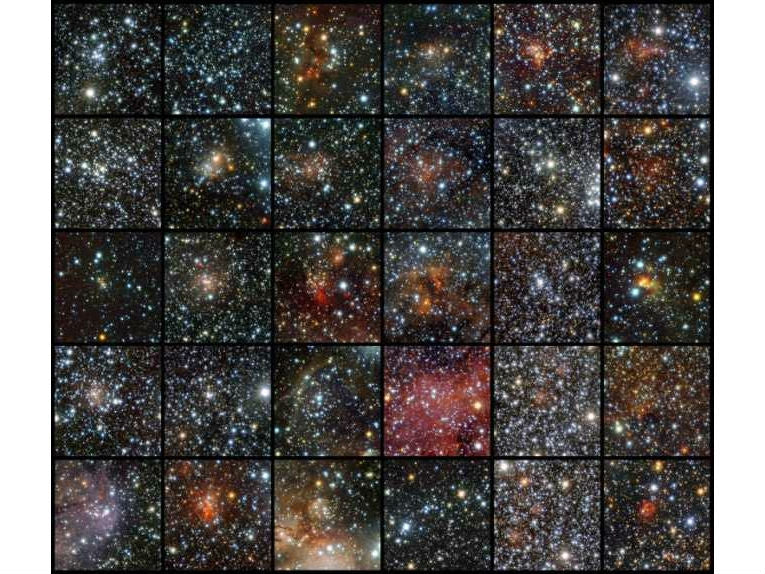Scientists working under the auspices of the VISTA Variable in the Via Lactea programme (VVV) have identified 96 new star clusters that previously went unnoticed due to dust and gas clouds in the Milky Way. The new discoveries are largely due to the capabilities of the ESO's (European Southern Observatory) infrared VISTA telescope in the Chilean desert, a high performance telescope that has allowed astronomers to see further than ever before into the Milky Way.
Most stars similar to our sun occur in groups known as open clusters, however, many form in dusty regions of the Milky Way, which makes them very hard to see using traditional methods. The VISTA telescope uses infrared to scan the cosmos, giving scientists a distinct advantage over traditional telescopes.
"In order to trace the youngest star cluster formation we concentrated our search towards star-forming regions. In regions that looked empty in previous visible-light surveys, the sensitive VISTA infrared detectors uncovered many new objects," said Dante Minniti, one of the scientists involved with the project.
Using sophisticated computer programmes, the scientists were able to remove foreground stars to reveal, count and study the star clusters behind. Previously, dust and gas clouds in front of these clusters made them much more difficult to spot. The scientists were even able to age some of the stars and measure the distances between the clusters.
Radostin Kurtev elaborated on the team's findings: "We found that most of the clusters are very small and only have about 10-20 stars. Compared to typical open clusters, these are very faint and compact objects - the dust in front of these clusters makes them appear 10,000 to 100 million times fainter in visible light. It's no wonder they were hidden."
The scientists believe that the results, which will appear in the journal, Astronomy and Astrophysics, may only be the tip of the iceberg. This is just one of six surveys currently being undertaken utilising the VISTA telescope and there may be more than 25,000 clusters still to be discovered.
Top Image Credit: © ESO/J. Borissova










